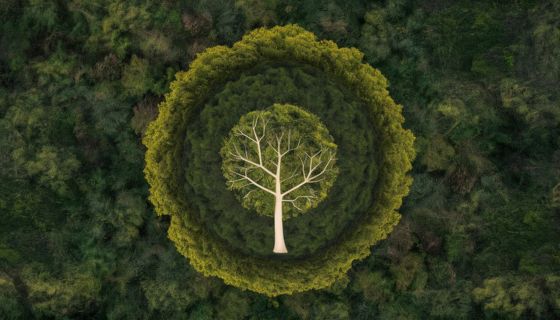In the realm of environmental conservation, innovative technologies continue to play a pivotal role in monitoring and preserving ecosystems. One such groundbreaking technology is Tree Radar, which utilizes a technique known as eco-echolocation. This cutting-edge approach enables scientists to non-invasively study trees and forests, providing valuable insights into their health, structure, and biodiversity. As we delve into the intricacies of Tree Radar and its contributions to environmental conservation, we uncover a powerful tool that aids in the protection of our planet’s precious natural resources.
At its core, Tree Radar harnesses the principles of echolocation, a biological phenomenon used by certain animals like bats and dolphins to navigate and locate objects in their surroundings. However, instead of emitting sound waves, tree radar emits electromagnetic waves, typically in the microwave or radio frequency range. These waves penetrate through the tree’s tissues, allowing researchers to create detailed images of its internal structure without causing harm or disturbance.
One of the primary applications of Tree Radar is the assessment of tree health and stability. By analyzing the radar images, scientists can identify signs of decay, disease, or structural weaknesses within the tree, enabling them to take proactive measures to mitigate risks such as tree falls or the spread of pathogens. This proactive approach not only helps in preserving individual trees but also contributes to the overall health and resilience of forest ecosystems.
Moreover, Tree Radar facilitates the study of biodiversity within forests. By scanning multiple trees across different habitats, researchers can map out the distribution of various species and assess the overall biodiversity levels. This information is crucial for conservation efforts as it helps in identifying areas of high ecological importance and implementing targeted conservation strategies to protect vulnerable species and habitats.
Furthermore, Tree Radar aids in the monitoring of forest dynamics and ecosystem processes. By conducting repeated scans over time, scientists can track changes in tree growth, mortality rates, and forest composition. This longitudinal data provides valuable insights into the impact of factors such as climate change, invasive species, and human activities on forest ecosystems, guiding conservation initiatives and management practices.
In addition to its scientific applications, Tree Radar also offers practical benefits for forestry and land management. For instance, it can assist in the planning and execution of tree planting initiatives by identifying suitable locations and assessing soil conditions. Similarly, it can be used to optimize forest harvesting operations by identifying mature trees for timber extraction while minimizing ecological disturbances.
Another notable aspect of Tree Radar is its non-destructive nature, which sets it apart from traditional methods such as tree coring or invasive measurements. By avoiding physical harm to trees, Tree Radar minimizes the negative impacts on forest ecosystems and allows for repeated monitoring without causing undue stress or damage. This ethical approach aligns with the principles of sustainable forest management and ensures the long-term viability of conservation efforts.
Despite its numerous advantages, Tree Radar also faces certain challenges and limitations. For instance, its effectiveness can be influenced by factors such as tree species, size, and environmental conditions. Additionally, the interpretation of radar images requires specialized expertise, and the equipment can be expensive to acquire and operate. However, ongoing advancements in technology and research are continually improving the capabilities and accessibility of Tree Radar, making it an increasingly valuable tool for environmental conservation.
In conclusion, Tree Radar represents a groundbreaking innovation in the field of environmental conservation, offering a non-invasive and effective means of studying trees and forests. From assessing tree health to monitoring biodiversity and ecosystem dynamics, Tree Radar provides invaluable insights that inform conservation efforts and promote sustainable land management practices. As we continue to confront the challenges of environmental degradation and biodiversity loss, technologies like Tree Radar offer hope for a brighter and more resilient future for our planet’s ecosystems.




